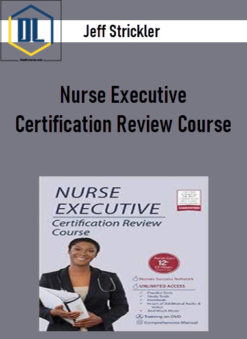-
×
 Leigh Spusta – The Secret MindScript
1 × $9.00
Leigh Spusta – The Secret MindScript
1 × $9.00 -
×
 David Snyder – People Reading For Fun And Profit
1 × $19.00
David Snyder – People Reading For Fun And Profit
1 × $19.00 -
×
 Nadine Lee – Erotic Pulse
1 × $194.00
Nadine Lee – Erotic Pulse
1 × $194.00 -
×
 Girls Chase – What She Really Means
1 × $16.00
Girls Chase – What She Really Means
1 × $16.00 -
×
 Longevity Warehouse Streaming – Longevity Now Conference Webcast – 2016
1 × $32.00
Longevity Warehouse Streaming – Longevity Now Conference Webcast – 2016
1 × $32.00 -
×
 John Overdurf – Splitting Synesthesias within the Rhizome
1 × $42.00
John Overdurf – Splitting Synesthesias within the Rhizome
1 × $42.00 -
×
 Will Freemen – Life Traps: The 20 Traps You Need To Avoid In The Game Of Life
1 × $40.00
Will Freemen – Life Traps: The 20 Traps You Need To Avoid In The Game Of Life
1 × $40.00 -
×
 Duston Mcgroarty – Native Ads Academy
1 × $17.00
Duston Mcgroarty – Native Ads Academy
1 × $17.00 -
×
 David Morin – Fast Friend Protocol
1 × $47.00
David Morin – Fast Friend Protocol
1 × $47.00 -
×
 Talmadge Harper – Human Lie Detector
1 × $15.00
Talmadge Harper – Human Lie Detector
1 × $15.00 -
×
 Flux Academy – Design Career Kickstarter Bundle
1 × $9.00
Flux Academy – Design Career Kickstarter Bundle
1 × $9.00
Buy With Coupon: DLC25 (-25%)
Bruce Singer – The Chronic Pain Tool Box, Effective Interventions for Treating Complex Chronic Pain
$199.00 Original price was: $199.00.$67.00Current price is: $67.00.
SKU: LM49H9WA
Categories: Instant Delivery, Medical
Tags: Bruce Singer, The Chronic Pain Tool Box: Effective Interventions for Treating Complex Chronic Pain
Description
Bruce Singer – The Chronic Pain Tool Box, Effective Interventions for Treating Complex Chronic Pain
Years ago, I sat down to evaluate a potential client with chronic pain. A minute hadn’t passed before she broke down in tears while describing a 5-year-old injury that left her with excruciating neck pain.
Despite 3 back surgeries and countless procedures, her back was still “killing” her and she placed her pain at 15/10. She couldn’t sleep, she had gained weight and couldn’t exercise. She had stopped working, was in a lawsuit over the injury, and was afraid to leave the house. Her doctor had placed her on high doses of an opiate pain killer plus an anti-anxiety medication and she admitted that sometimes she took more than she was prescribed. She admitted to having suicidal thoughts because she had lost hope that she might ever get her life back.
Now imagine yourself in my place. How would you conduct an effective assessment? Do you know the difference between chronic pain and a chronic pain syndrome? What might be the best approach to treat pain and a co-occurring disorder? Are you confident you have enough evidence-based skills in your toolbox to help clients help themselves?
This is a challenging time to treat complex chronic pain. Over 100 million Americans experience some form of chronic pain and the country is struggling with a tragic opiate epidemic that has cost tens of thousands of lives and is ripping society apart. As a clinician, you are in unique position to provide effective pain management to your chronic pain clients… but only if you fill your invisible toolbox with the evidence-based skills that work.
In this interactive and creative seminar, we will focus on the assessment and treatment of complex chronic pain. You will learn how to evaluate it and how to discern and manage co-occurring disorders. You will increase your confidence in your ability to transform your knowledge of CBT, mindfulness, and ACT into the “silver bullet” skills that can facilitate “inside-out” pain management that empowers your clients. You will leave this seminar with 8 practical interventions you can begin to use tomorrow to motivate your clients to commit to the changes they want and to assist their families in finding the resources they need.
Objectives
- Specify the difference between chronic pain and a complex chronic pain syndrome and how conventional treatments (including MAT, procedures, and surgery) often “make it worse.”
- Delineate the difference between physical pain and emotional suffering and how the 5 Big Negative Emotions magnify the pain experience as it relates to clinical practice.
- Establish the ability to conduct an effective biopsychosocial assessment of chronic pain and use pain scales to recalibrate pain levels and increase wellness in a clinical setting.
- Utilize cognitive restructuring to assist clients in creating “black duck moments” in session that will change their perspective on their pain experiences and motivate them to live more active and purposeful lives.
- Practice 3 ACT interventions to defuse the impact of chronic pain and increase client commitment to positive behavioral change for symptom management.
- Implement 4 mindfulness-based interventions to empower clients to manage their pain by going FAR.
- Integrate the power of gratitude into your practice to decrease pain and increase wellness to improve treatment outcomes.
- Develop the competency to guide a multidisciplinary approach to pain management that connects pain clients and families to resources beyond therapy to improve client level of functioning.
Curriculum
The Chronic Pain Dilemma
Pain and its impact on society
- Neurophysiology and psychology of pain
- Benefits and the risks of opioids
- Pain and the family
Complex Chronic Pain
- The progression from acute to chronic pain (physical and emotional factors)
- Chronic pain syndrome and its constellation of symptoms
- Conventional treatments and why they fail
Pain vs suffering: What are we really treating?
- The 5 big “negative” emotions that magnify pain
- The number one rule in pain management
- Strategies to un-attach pain from suffering
Assessment
- The Interview
- Validation and the therapeutic alliance
- Collect a biopsychosocial history
- Co-occurring disorders and other risk factors
- The Battery
- Useful self-report measures
- Interpretation of results for case conceptualization
- Effective treatment planning
The Chronic Pain Tool Box
- Best Practice Guidelines and treatment options
- APA Division 12 recommendations
- CDC and government recommendations
- Empathy and the power of the therapeutic alliance
- Cognitive Behavioral Therapy
- Unleash “black ducks” to eat up ANTs
- Harness the power of client’s own words
- Recalibrate Pain: a cognitive approach
- Mindfulness
- Why mindfulness is essential for the treatment of chronic pain
- 4 creative interventions to help clients see “What is NOT wrong with me”
- The FAR approach and how it resonates with clients
- Limitations of the psychotherapeutic approach
- Acceptance and Commitment Therapy
- Cognitive defusion and how to use it with clients
- The Values Compass and how to help clients find their True North
- Develop motivation and commitment
- Limitations of the psychotherapeutic approach
- Gratefulness
- The hidden power of gratefulness and its evidence for chronic pain
- 3 gratitude interventions that directly impact the pain experience
- More Tools You Can Use
- Include the family in treatment
- Effective sleep hygiene
- Multidisciplinary treatments: when and how to use them
- The T.E.M.P.L.E.S.S hand-out you can share with clients
- Patient advocate resources
- Recovery resources
Readmore about: Bruce Singer
Delivery Policy
When will I receive my course?
You will receive a link to download your course immediately or within 1 to 21 days. It depends on the product you buy, so please read the short description of the product carefully before making a purchase.
How is my course delivered?
We share courses through Google Drive, so once your order is complete, you'll receive an invitation to view the course in your email.
To avoid any delay in delivery, please provide a Google mail and enter your email address correctly in the Checkout Page.
In case you submit a wrong email address, please contact us to resend the course to the correct email.
How do I check status of my order?
Please log in to TheDLCourse account then go to Order Page. You will find all your orders includes number, date, status and total price.
If the status is Processing: Your course is being uploaded. Please be patient and wait for us to complete your order. If your order has multiple courses and one of them has not been updated with the download link, the status of the order is also Processing.
If the status is Completed: Your course is ready for immediate download. Click "VIEW" to view details and download the course.
Where can I find my course?
Once your order is complete, a link to download the course will automatically be sent to your email.
You can also get the download link by logging into your TheDLCourse account then going to Downloads Page.
Related products
-82%
-81%
-80%
-74%
-82%
-43%
-81%
-51%










